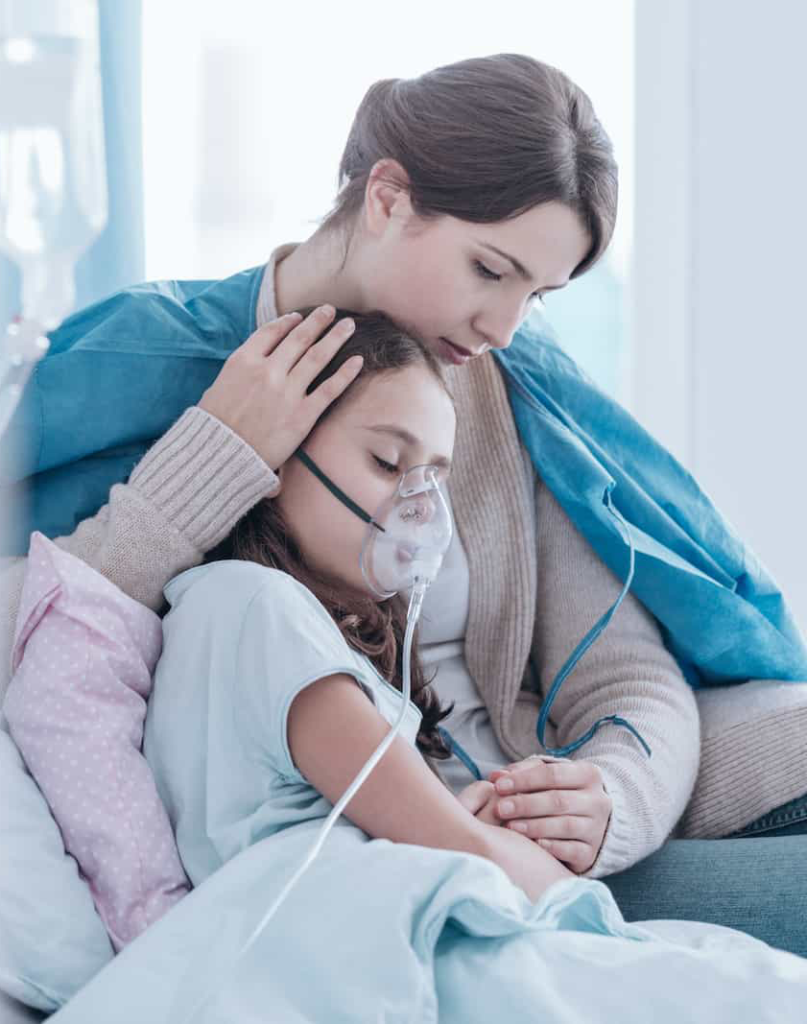What is RRP?

What is Recurrent Respiratory Papillomatosis?
Recurrent Respiratory Papillomatosis (RRP) is a rare disease that is characterized by the growth of tumors in the respiratory tract caused by the human papilloma virus (HPV). Although they primarily occur in the larynx on and around the vocal cords, these growths may spread downward and affect the trachea, bronchi, and occasionally the lungs.
It is sometimes referred to as laryngeal papillomatosis, tracheal papillomatosis, glottal papillomatosis, as well as AORRP/JORRP, and in the past was often called juvenile laryngeal papillomatosis, because it was thought to primarily affect only children. There is no cure, and currently there are no FDA approved pharmaceuticals to treat RRP.
About Recurrent Respiratory Papillomatosis
Recurrent respiratory papillomatosis (RRP) is a rare disease that is characterized by the growth of tumors in the respiratory tract caused by the human papilloma virus (HPV). Although they primarily occur in the larynx on and around the vocal cords, these growths may spread downward and affect the trachea, bronchi, and occasionally the lungs. It is sometimes referred to as laryngeal papillomatosis, tracheal papillomatosis, glottal papillomatosis, as well as AORRP/JORRP, and in the past was often called juvenile laryngeal papillomatosis, because it was thought to primarily affect only children. There is no cure, and currently there are no FDA approved pharmaceuticals to treat RRP. A distinguishing aspect of this disease is the tendency for the papilloma to recur after surgical procedures to remove them. Hence, the “recurrent” part of the name. The tumors or growths can be wart-like, often have a cauliflower-like appearance, and are either pedunculated (attached only by a slim stalk), or sessile (closely adhering to mucosa).

Who gets RRP?
RRP occurs in both children and adults. In children, JORRP (juvenile onset RRP) is almost always diagnosed by age ten and usually before the age of five, showing no sexual preference. Statistics indicate that first-born children delivered vaginally to young mothers (under the age of 20) with active condyloma during pregnancy, are at greatest risk. However, even among this group the disease is still rare. The distribution of diagnosis ages is much broader for adult onset RRP (AORRP) than for children, as RRP may present at any age with some preference for occurrence seen in adult males in their 30s. Although there is now an RRP registry documenting juvenile RRP cases at 23 medical centers in the U.S. (managed by the Centers for Disease Control), there is still a lack of a comprehensive epidemiological database of RRP patient information. Hence, it is difficult to determine incidence and prevalence statistics with a high degree of confidence.
One of the first estimates of RRP incidence and prevalence in the U.S. was based on a study conducted in 1995 by the RRP Task Force. Their projected totals for recurrent respiratory papillomas among children were 2354 new cases per year, with a 95% confidence interval (CI) ranging from 1448 to 3260, and 5970 active cases, with a 95% CI ranging from 3465 to 8474. The projections for AORRP were 3623 new cases per year (95% CI, 2359 to 4887) and 9015 active cases (95% CI, 6435 to 11,591). These estimates indicated an incidence among children of about 4.3 per 100,000 and among adults of about 1.8 per 100,000. A comprehensive study looking at 1994-2007 data from the Canadian national JORRP registry (Campisi et al., 2010) indicates JORRP incidence of .24 per 100,000 and prevalence of 1.11 per 100,000.
We are recently making exciting progress on lowering the incidence rate of RRP since the introduction of the HPV vaccine (Gardasil). For JORRP, Australia has lowered their incidence rate to 0.022 per 100,000 in 2016, and in 2019 no new cases of JORRP were reported(Novakovic et al). In the United States, the JORRP incidence rate is most recently considered to be 0.5 per 100,000.
What is RRP?

There is considerable evidence that RRP in children results from a vertical transmission of HPV from mother to child. Virology studies have substantiated the link between genital condylomas and JORRP. HPV types 6 and 11, which are responsible for 80-90% of the condylomas, are responsible for nearly 100% of JORRP. In a study using data collected by the RRP Foundation, it was found that the number of JORRP patients born via cesarean section was less than 25% of the statistically expected number based on national normals, suggesting that a cesarean birth might play a preventative role for RRP. Furthermore, as previously noted, it was found that mothers under the age of 20, who have condyloma during pregnancy and who deliver their first born child vaginally, appear to be at greatest risk of infecting their newborn.
In adults RRP is also caused by infection with HPV-6 and HPV-11. However, there does not appear to be a statistically significant relationship with birth factors as is seen in JORRP cases. This probably indicates that for AORRP the infection is not likely acquired at birth and there is some speculation that for many adults it may be sexually transmitted.
Why does RRP occur?
Beyond the previously noted risk factors regarding the transmission of HPV, it is still not very well understood why only certain individuals, present with RRP. It is estimated that approximately 5% of the U.S. population may have HPV in their respiratory tract, but less than 1 in 1,000 of those infected ever develop RRP. This seems to invite the speculation that some subtle immunologic deficiency affects the respiratory tracts of those few who develop RRP. In this regard, there are some interesting research studies indicating that in RRP patients some amount of killer T cells may be missing a key surface protein that normally would allow them to recognize HPV cells.
What are the symptoms of rRP?
The most common symptom of RRP is a voice that is persistently hoarse, weak, low in pitch, breathy, or strained. Often dysphonia (i.e., difficulty in speaking) or aphonia (i.e., loss of voice) can occur as well. Tumor mass and location (i.e., how the growths interfere with normal vocal cord function) may explain the degree of voice quality defects. For lesions that form near the vocal folds, hoarseness can occur very quickly with small lesions. As the disease progresses, shortness of breath can occur as the airway becomes blocked by bulky lesions.
Although this is more common in children, in some situations RRP can cause breathing difficulties in adults, especially during exercise. Young children often present with a weak cry, chronic cough, swallowing difficulties and stridor. Inspiratory stridor is noted by noisy breathing such as a high-pitched whistle or snore as a child strains during inhalation, usually as they sleep. This is indicative of an upper respiratory obstruction and warrants immediate attention by an otolaryngologist. RRP related symptoms may develop gradually over months or even years in mild cases, but in very aggressive situations symptoms may emerge in a matter of days.
How is RRP diagnosed?
RRP is typically diagnosed by an ear, nose and throat physician (ENT) performing an examination of the larynx. Some physicians may start with a mirror examination, which is done using a mirror placed in the back of the throat reflecting light down the throat and onto the vocal folds. Typically, a doctor or a trained speech-language pathologist diagnoses RRP via an indirect laryngoscopy in the ENT office. This involves the placement of a flexible fiberoptic camera through the nose to further visualize the vocal folds in the throat or the use of a straight, rigid camera placed through the mouth that shines down the throat onto the vocal folds. In addition to allowing the ENT to view the larynx, a video record can also be obtained with these instruments. Some otolaryngologists or speech pathologists may use a videostroboscopy to obtain an even more detailed look. However, to make an absolutely definitive diagnosis of RRP, a direct laryngoscopy (usually in conjunction with surgical removal of papilloma growths) must be performed in an operating room with the patient under general anesthesia. At this time, a biopsy is taken and tested for HPV. It may also be typed for HPV 6 or HPV 11.
In some cases the direct laryngoscopy is the only option, usually this involves young children in distress, where instrumenting the airway outside of the operating room might be hazardous. It is most desirable, however, to have a diagnosis of RRP before a surgical procedure so as to facilitate family awareness/expectations and so the anesthesiologist, surgeon, and OR nurses will be properly prepared. Pediatricians who are unfamiliar with this disease often misdiagnose RRP. Many times shortness of breath and stridor are mistakenly assumed to be the result of asthma or croup. The consequences of these errors may be serious as papillomas are at least partially obstructing the airway to cause these symptoms and should be removed immediately.
For more answers to commonly asked questions, check out our FAQs.
Is RRP contagious?
Recurrent Respiratory Papillomatosis is not a shareable disease based upon current research, unlike oral HPV.

